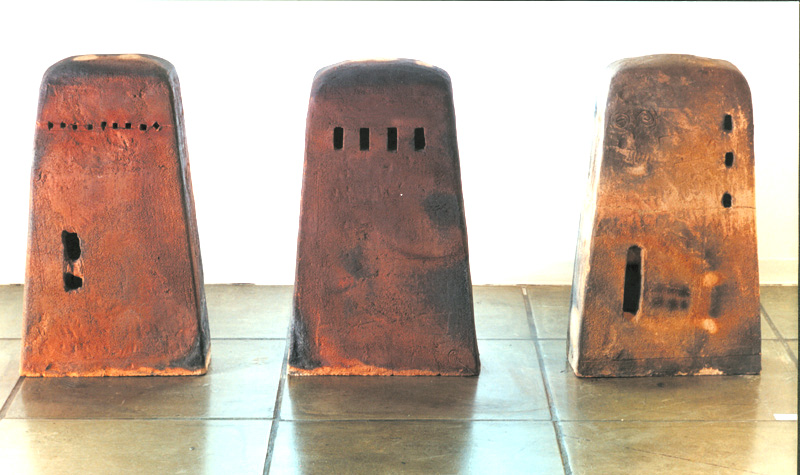Adel Souki
The clay with which Adel Souki works is always impregnated with her stories and her time, in a constant exercise of coping with herself. Born in Divinópolis, Minas Gerais, she grew up among books, but also making pots with clay.
Already graduated, Adel began studying art and working with clays, graduating in Fine Arts from the Guignard University, where she met the sculptor Amílcar de Castro who taught her “that beauty is what is true, and that originally was to seek her origin”.
Between workshops, courses, and exhibitions, approaching the Japanese artist Toshiko Ishii was a special moment. In addition to the preparation of the clay and of the contact with the firing in the Anagama kiln – of Japanese tradition, she came to understand time better, in ways which are more and more plural, also influenced by her tireless trips to teach/learn more about clay and firing, from visiting small communities in the interior of Minas Gerais to large cosmopolitan centres.
The area around the kiln was gradually composing an environment that paradoxically hides and reveals clues of what happens in the artist’s research. There are traces of what it is, of what it may turn out to be and what should stay as a suspension.
In space, fragments of past experiences clutter, overlapping, in seemingly random alternation, remnants of transformation endeavours and seemingly sterile intervals, revealing paths and processes in which the artist faces herself as if she plunged into life to understand death or into death to understand life.
In Adel’s paths and processes, we find signs of all this, of searches outlined between the beating and kneading the clay, gathering shards, covering, digging and bringing to the possible limit the diving into / coping with the matter, sometimes crude, heavy, persistent, sometimes decanted, almost tactile, ephemeral.







